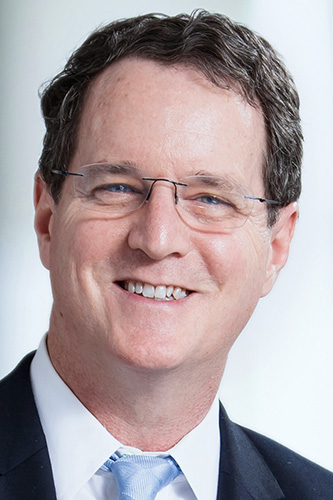/ Recently Commented
Balancing Digital Integrity: CENTR Critiques EU’s Insolvency Proposal
CENTR, the leading body representing European national domain registries, has voiced concerns over the European Union's insolvency proposal. The group emphasizes that the current proposal places an undue strain on country code top-level domain (ccTLD) registries by demanding excessive data about domain name holders. more
- CircleID Reporter
- Comments: 0
- Views: 15,390
What Happened to Quantum Networks?
 A few years ago, there were a lot of predictions that we'd see broadband networks converting to quantum technology because of the enhanced security. As happens with many new technologies, quantum computing is advancing at a slower pace than the wild predictions that accompanied the launch of the new technology. more
A few years ago, there were a lot of predictions that we'd see broadband networks converting to quantum technology because of the enhanced security. As happens with many new technologies, quantum computing is advancing at a slower pace than the wild predictions that accompanied the launch of the new technology. more
- Doug Dawson
- Comments: 0
- Views: 8,106
UK’s National Agencies Release White Paper on Evolving Cyber Crime Ecosystem
- CircleID Reporter
- Comments: 0
- Views: 17,660
Measuring the Use of DNSSEC
 The canonical specification of the DNS that is normally cited are the pair of quite venerable RFCs, RFC 1034, "Domain names - concepts and facilities", and RFC 1035, "Domain names - implementation and specification", both published in November 1987. However, these two specification documents are just the tip of a rather large iceberg. One compendium of all the RFCs that touch upon the DNS lists some 292 RFCs. more
The canonical specification of the DNS that is normally cited are the pair of quite venerable RFCs, RFC 1034, "Domain names - concepts and facilities", and RFC 1035, "Domain names - implementation and specification", both published in November 1987. However, these two specification documents are just the tip of a rather large iceberg. One compendium of all the RFCs that touch upon the DNS lists some 292 RFCs. more
- Geoff Huston
- Comments: 0
- Views: 20,945
The Hague to Probe Cyberwarfare Under Existing International Law
In a recent article published by WIRED Magazine, a significant shift in international law regarding cyberwarfare has been brought to light. The International Criminal Court (ICC) at the Hague has signaled its intention to investigate and prosecute hacking crimes that breach existing international law without the need for new regulations. more
- CircleID Reporter
- Comments: 0
- Views: 9,905
The Causes of Network Outages: Underlying Causes, Growing Threats and Industry Implications
 The Uptime Institute (UI) is an IT industry research firm best known for certifying that data centers meet industry standards. UI issues an annual report that analyzes the cause of data center outages. The causes for data center outages are relevant to the broadband industry because the same kinds of issues shut down switching hubs and Network Operations Centers. more
The Uptime Institute (UI) is an IT industry research firm best known for certifying that data centers meet industry standards. UI issues an annual report that analyzes the cause of data center outages. The causes for data center outages are relevant to the broadband industry because the same kinds of issues shut down switching hubs and Network Operations Centers. more
- Doug Dawson
- Comments: 0
- Views: 24,957
Phishing Attacks Surge Despite Increased Awareness, New Strategies Needed
The alarming rise of phishing attacks has been underscored by a recent study "Phishing Landscape 2023: An Annual Study of the Scope and Distribution of Phishing conducted" by the Interisle Consulting Group, revealing a tripling of such attacks since May 2020. Despite efforts by companies and policymakers to combat this cybercrime, the data suggests that the prevailing strategies are ineffective and worsening each year. more
- CircleID Reporter
- Comments: 0
- Views: 43,988
The Rising Cost of Digital Theft and Espionage in Germany
The German digital association, Bitkom, recently announced that the cost of IT equipment theft, data breaches, digital and industrial espionage, and sabotage is expected to reach a staggering 206 billion euros ($224 billion) in 2023. more
- CircleID Reporter
- Comments: 0
- Views: 10,501
Hospitals Advised to Prepare for a Month of Downtime Following Cyberattacks
The Joint Commission, a healthcare accreditation agency, has advised hospitals and health systems to brace for at least a month of downtime following a cyberattack, according to The Wall Street Journal. This recommendation is part of new guidelines released by the agency for handling IT security events. more
- CircleID Reporter
- Comments: 0
- Views: 9,854
EU CRA: Regulatory Extremism and Exceptionalism
 European Union (EU) legislators, like most of the world, are troubled about the increasing number and severity of cybersecurity incidents. However, unlike most of the world, which is taking a flexible, adaptive Zero Trust Model approach of continuous controls for cyberdefense, the EU government is pursuing a vastly expanded version of the failed Common Criteria certification model coupled with regulatory extremism and exceptionalism strategies. more
European Union (EU) legislators, like most of the world, are troubled about the increasing number and severity of cybersecurity incidents. However, unlike most of the world, which is taking a flexible, adaptive Zero Trust Model approach of continuous controls for cyberdefense, the EU government is pursuing a vastly expanded version of the failed Common Criteria certification model coupled with regulatory extremism and exceptionalism strategies. more
- Anthony Rutkowski
- Comments: 0
- Views: 12,801
U.N.‘s Global Digital Compact Faces Criticism for Overlooking Technical Experts in Internet Governance
ICANN, APNIC and ARIN recently voiced concerns about comments made by the United Nations (UN) Office of the Secretary-General's Envoy on Technology (OSET), Ambassador Amandeep Gill. These remarks seem to conflate the roles of the technical community and civil society in the Internet ecosystem. more
- CircleID Reporter
- Comments: 0
- Views: 17,361
The Standards Myth That Does Not Stop
 The latest iteration of the most expansive, omnipotential cybersecurity legal regime ever drafted appeared a few days ago. The European Union (EU) Cyber Resilience Act (CRA) is attempting to assert jurisdiction and control over all "products with digital elements" defined as "any software or hardware product and its remote data processing solutions, including software or hardware components to be placed on the market." more
The latest iteration of the most expansive, omnipotential cybersecurity legal regime ever drafted appeared a few days ago. The European Union (EU) Cyber Resilience Act (CRA) is attempting to assert jurisdiction and control over all "products with digital elements" defined as "any software or hardware product and its remote data processing solutions, including software or hardware components to be placed on the market." more
- Anthony Rutkowski
- Comments: 0
- Views: 12,453
IPv4 Prices: Supply and Demand in 2023
 In early 2022 the discount that had been available for large blocks of IPv4 addresses disappeared. For the first time in years, /16 blocks and larger began to sell at an increasing premium. By Q2-2023, small and medium-sized blocks sold for a 30-35% discount to larger ones. At the same time, the tighter range of prices that had persisted for nearly a decade fractured and blocks traded in wide ranges throughout 2022 and the first half of 2023. more
In early 2022 the discount that had been available for large blocks of IPv4 addresses disappeared. For the first time in years, /16 blocks and larger began to sell at an increasing premium. By Q2-2023, small and medium-sized blocks sold for a 30-35% discount to larger ones. At the same time, the tighter range of prices that had persisted for nearly a decade fractured and blocks traded in wide ranges throughout 2022 and the first half of 2023. more
- Lee Howard
- Comments: 0
- Views: 15,270
Cybersecurity for Schools
 FCC Chairwoman Jessica Rosenworcel recently asked the other FCC Commissioners to support a proposal to spend $200 million over three years to bolster school cybersecurity. Rosenworcel plans to issue a Notice for Proposed Rulemaking (NRPM) soon for her proposal. The NPRM will set off a round of public comments and then a ruling if a majority of the Commissioners agree with the final set of rule changes. more
FCC Chairwoman Jessica Rosenworcel recently asked the other FCC Commissioners to support a proposal to spend $200 million over three years to bolster school cybersecurity. Rosenworcel plans to issue a Notice for Proposed Rulemaking (NRPM) soon for her proposal. The NPRM will set off a round of public comments and then a ruling if a majority of the Commissioners agree with the final set of rule changes. more
- Doug Dawson
- Comments: 0
- Views: 11,723
Verisign Will Help Strengthen Security With DNSSEC Algorithm Update
 As part of Verisign's ongoing effort to make global internet infrastructure more secure, stable, and resilient, we will soon make an important technology update to how we protect the top-level domains (TLDs) we operate. The vast majority of internet users won't notice any difference, but the update will support enhanced security for several Verisign-operated TLDs and pave the way for broader adoption and the next era of Domain Name System (DNS) security measures. more
As part of Verisign's ongoing effort to make global internet infrastructure more secure, stable, and resilient, we will soon make an important technology update to how we protect the top-level domains (TLDs) we operate. The vast majority of internet users won't notice any difference, but the update will support enhanced security for several Verisign-operated TLDs and pave the way for broader adoption and the next era of Domain Name System (DNS) security measures. more
- Duane Wessels
- Comments: 0
- Views: 19,792